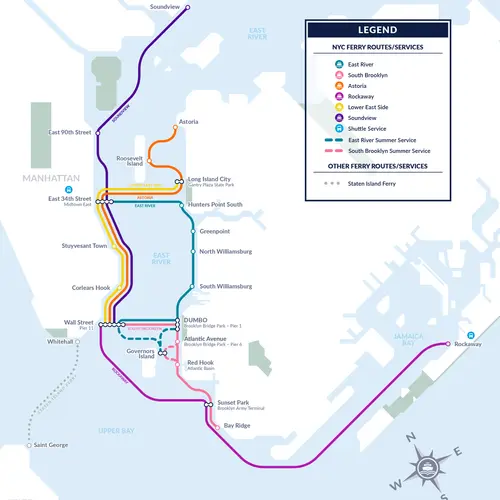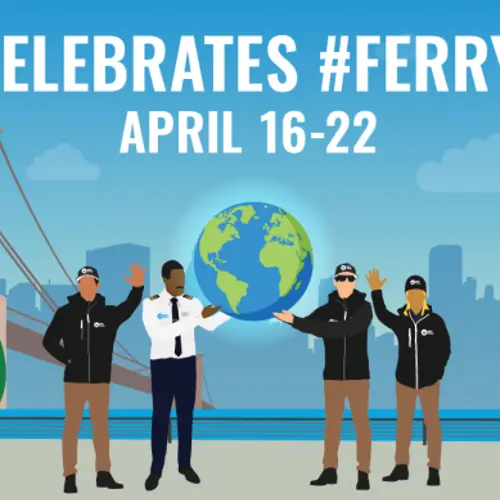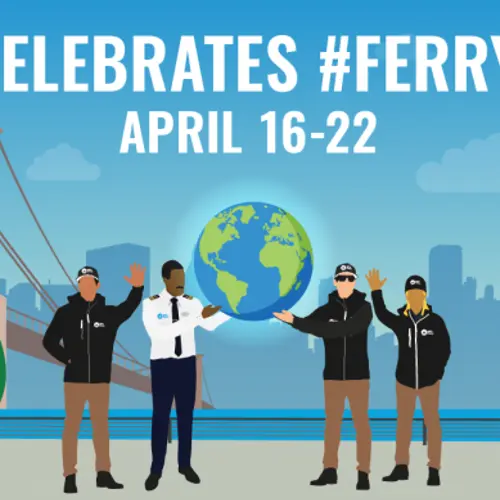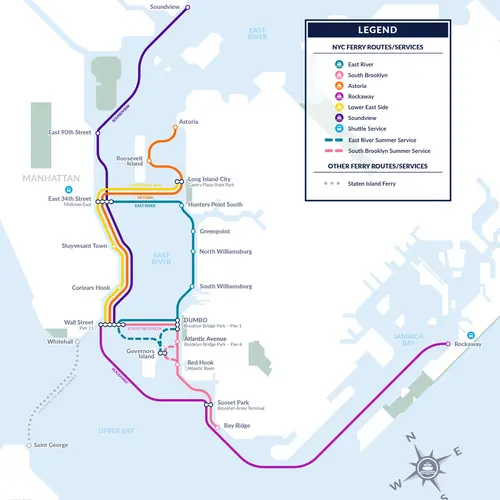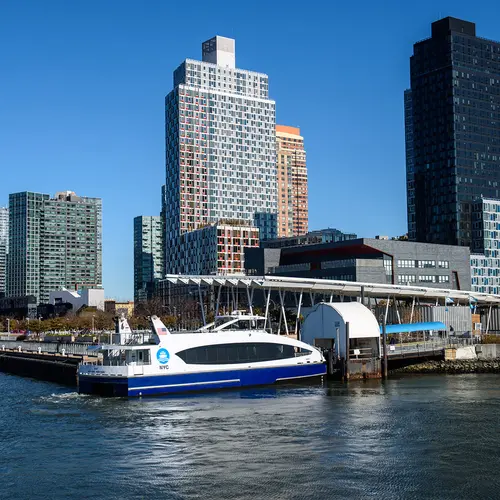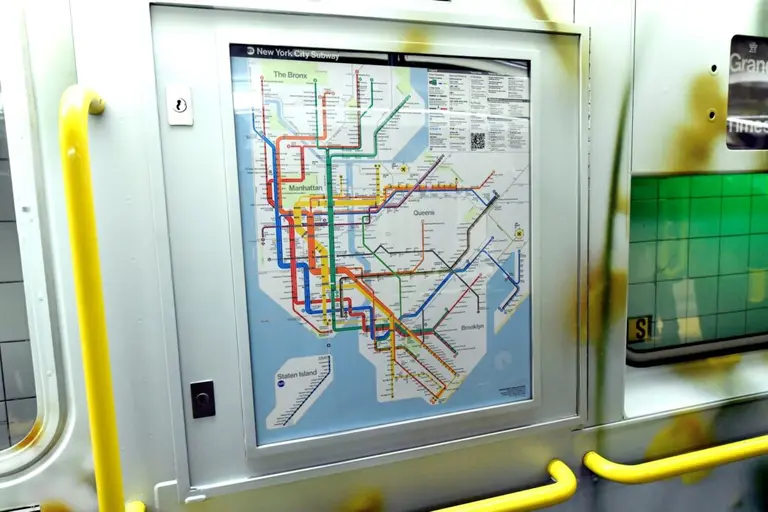Why the NYC Ferry is the transit option New Yorkers agree on
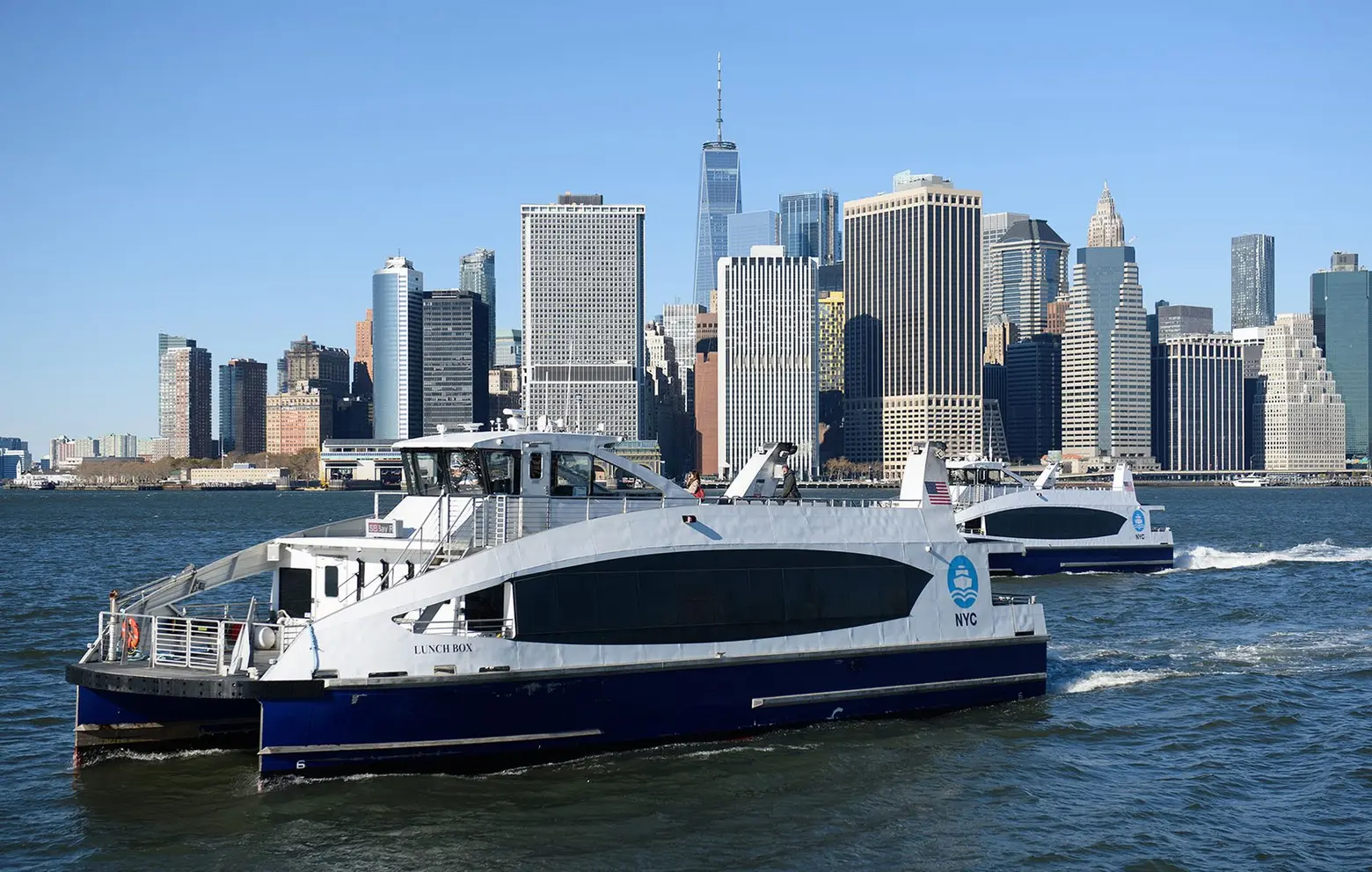
When the Duch settled New York City as New Amsterdam in the 17th century, it was the area’s waterways that drew them in. Four hundred years later, the city is once again reclaiming its waterfront locale, with countless new developments rising on the Hudson and East Rivers, increasing the need for more transit options. The booming NYC ferry, which, in 2017, served nearly three million riders across its four routes currently in operation, has exceeded the projected number by approximately 34 percent or 800,000 riders.
As the subway system quickly and publicly goes down in flames, along with the congestion pricing plan for alleviating traffic, New York City’s ferries are showing the transit world how it’s done, with politicians, commuters, and communities all on board. In honor of NYC Ferry’s #ferryearthweek, an effort to promote the green and sustainable features of the ferry from April 16-22, 6sqft decided to take a deeper look at the success of NYC’s ferry system, how it’s changed the transit landscape of the city, and what’s to come in the near future.

Mayor Bill de Blasio has made a huge push to grow the ferry service since 2017. Last week, he announced a new Soundview route that will launch this summer. It’s anticipated to serve 400,000 riders a year traveling between the South Bronx and a new landing at East 90th Street, as well as existing landings at East 34th Street and Wall Street/Pier 11 in Manhattan. Riders on the new route will be able to make free connections at East 34th Street and Pier 11/Wall Street to the existing Astoria, Rockaway, East River, South Brooklyn Lines and the new Lower East Side Route starting this summer. From start to finish, the ride will take less than an hour.
Bronx Borough President Ruben Diaz Jr. said “A thriving city requires us to consider new, alternative modes of transportation. Soundview is the perfect community to host new ferry service, and it is my hope that this new transit option will not only ease commutes for Bronx residents, but will provide travelers with a new way to visit and explore the Bronx. I thank NYCEDC and the administration for their work to expand ferry service to Soundview, and I look forward to bringing this service to other Bronx communities in the future.”
The Lower East Side route, also coming this summer, is projected to serve nearly one million riders annually, with stops at Manhattan’s Wall Street/Pier 11, Corlears Hook, Stuyvesant Cove, East 34th Street; and Long Island City, in Queens. This route take riders to Wall Street in nine minutes and to Midtown in 17 minutes, with the total trip expected to take just 32 minutes. With all the massive residential development on the LES, especially the Essex Crossing mega-development, this will surely be an immediate success.
When the Soundview and LES routes are up and running this summer, the NYC Ferry will have 20 vessels operating out of 21 landings across the city. Two of the four new ferry lines, all operated by Hornblower, are already carrying more passengers than originally projected for 2019. Due to the rapid success, the city had to order bigger boats with larger engines and new routes seem to be announced on a monthly basis. The new boats are designed to hold up to 349 passengers per vessel (current boats hold up to 150 passengers). Those new vessels have been officially named by the city’s public school kids with names like the Ocean Queen Rockstar, Seas the Day, and Rainbow Cruise.

“NYC Ferry is a transit success story. It’s reducing commuting times for hundreds of thousands of New Yorkers and bringing direct access to jobs, schools, parks and cultural institutions to the doorstep of our most underserved neighborhoods. NYC Ferry is helping us make this the fairest big city in America,” Mayor Bill de Blasio said. After hitting the one million rider mark last July, a city-conducted survey of ferry riders showed that more than 90 percent rated the service at least a 7 on a scale of 1 to 10.
At $2.75 per ride and free transfers across the ferry system, the cost is the same as a subway ride. The only common complaint about the ferry is that riders cannot transfer, without cost, to other modes of public transportation.
According to a New York Times article from November, although the fare is so appealing to many it is actually highly subsidized by the city. “Mr. de Blasio insisted on pegging the cost to the fare for a single ride on the subway and city buses. As a result, however, the ferries are heavily subsidized. City officials estimate that the subsidy amounts to about $6.60 per rider, which would translate to about $16.5 million so far.” Despite the discrepancy, the mayor is committed to keeping the fare in line with other public transit options.
Plus, the startup costs to develop new ferry routes and stations cost very little in terms of infrastructure development relative to other transport options. Building ports and routes does not disrupt current means of transportation, like the closing of subways and train lines do to upgrade. Ferries also have a romantic mystique about them.
In addition to providing much needed dependable transportation, the NYC Ferry employs more than 250 people and is currently hiring for 75 new jobs, including captains, deckhands, customer service agents, ticketing, operations and other positions.

In an effort to promote the green and sustainable features of the ferry, NYC Ferry is hosting #ferryearthweek from April 16-22. According to their website “you’ll see our NYC Ferry crew wearing green hats. That’s because at Hornblower we consider ourselves to be advocates for the environment. As part of our Respect Our Planet Mission, Hornblower companies are committed to cleaner air, cleaner water, and a cleaner future. And our internal practices mirror these commitments: we strive to minimize our impact on the environment through a process of continual improvement. This includes resource tracking, reducing our energy and water consumption, utilizing advancements in transportation technology, waste management practices and green purchasing.”
Another feature that makes the NYC ferries environmentally friendly is their low-wake design which causes less disruption to upland shorelines as well as other vessels in the harbor, including kayakers and paddlers.
In reference to the ferries, Deputy Mayor Alicia Glen said,“The mayor feels like this is one of the best things we’ve done.” I think we would all agree.
RELATED:
- NYC Ferry routes coming to the Lower East Side and the Bronx this summer
- With ridership booming, NYC Ferry could get new express routes
- Overcrowded NYC Ferry needs more boats to keep up with demand
All photos and images courtesy of NYC ferry
